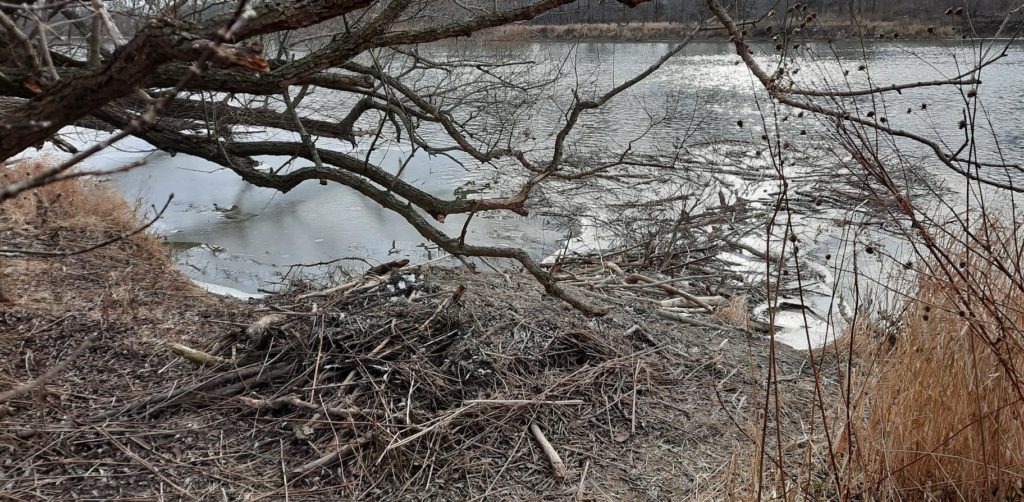
Beaver lodge on the bank of the Grand River just downstream from Seneca Park and about 150 m south of a new subdivision. -DOL
I went for a bird walk along the Riverside Trail which runs from Seneca Park (at the base of McClung Rd. in Caledonia) along the Grand River to York. The areas straddling McClung Road and the fields to the SE of the park have been filled (literally) with new housing – pushing >7,000 units. The “small town” of Caledonia is no longer that…sadly. But this isn’t the only new housing that is going up. I was pleasantly surprised to come upon 2 beaver lodges along the route! The first is about 200 m down from the park and 150 m south of the new housing development. I first noticed the fresh cuttings of young trees. When I followed the well-worn trail between the trees and the water, the lodge was quite evident: a pile of branches cemented with mud on the shore with a long accumulation of fresh cuttings extending out into the water – food the animals can count on and reach easily during the Winter.
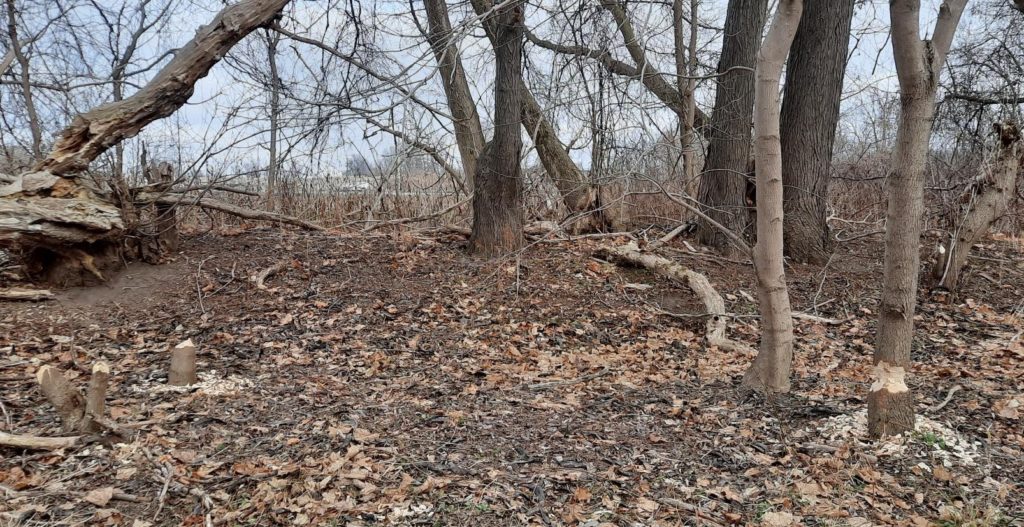
The fresh work of the beavers is quite evident. Interestingly there was an obscure trail that ran past the trees into the corn field behind/ -DOL
The second lodge was downstream from Sims Locks, built on the bank of an island about 20 m from the shore. Again, a pile of branches with a food larder extending out.
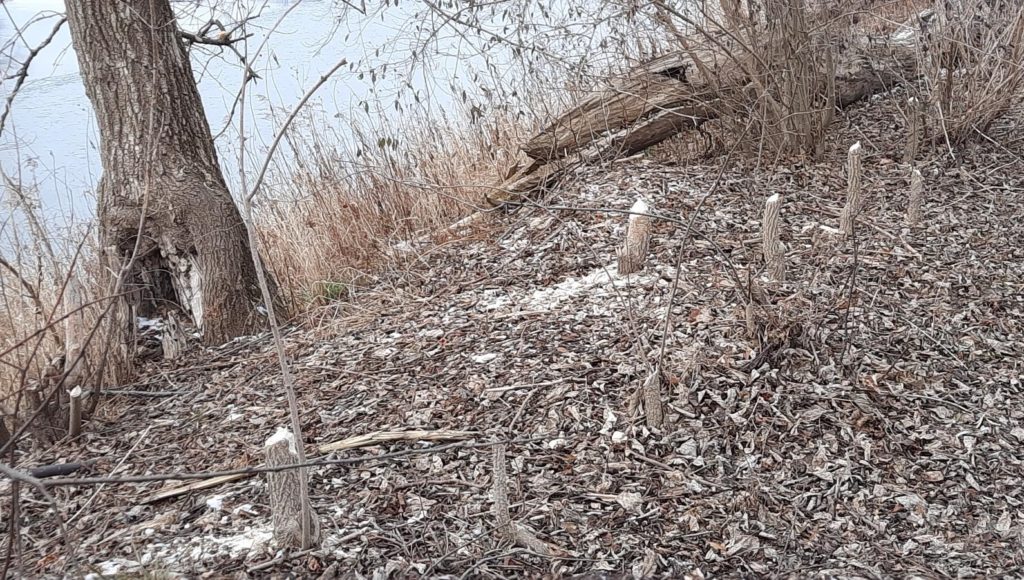
I can count at least 10 cuttings in this picture. There’s lots of food around – trees and corn behind.
Most people think of beaver lodges as conical structures in the middle of ponds created when the animals dam a stream or small river. The river shore-side lodges are a way to take advantage of a larger water source that can’t be dammed. The beaver burrows into the bank and covers the openings (there are usually 2) with a pile of branches (which also houses a living area). These dwellings are effective but much more dangerous than the typical lodges located in ponds. On rivers the beavers have to deal with flooding in the Spring or after intense rains or with destruction during Spring break-up when large ice pans can scour the shore. One March I chanced upon this destruction; I watched a 30 centimeter thick ice pan tear a lodge from its moorings and carry it away downstream.
A beaver pair is reportedly monogamous and mates for life. A litter of “kits” can range from 1 to 6, the size of the brood depending on local food availability. A colony consists of the two adults and two years of offspring. At 2 years the children are expelled from the den and must make their own way in the world.
Not far from the second beaver lodge I was surprised to come upon a mink foraging on the thin band of ice running along the shore of the island. While beavers are pure vegetarians, mink are strictly carnivorous taking everything from small woodland creatures (I saw one that was an expert predator of chipmunks killing two in as many days) to aquatic fare – the are semiaquatic and good swimmers. Mink are solitary outside the breeding season after which the female raises the young alone. The female digs a tunnel to house the nest which is lined with grasses and/or fur.
Rick

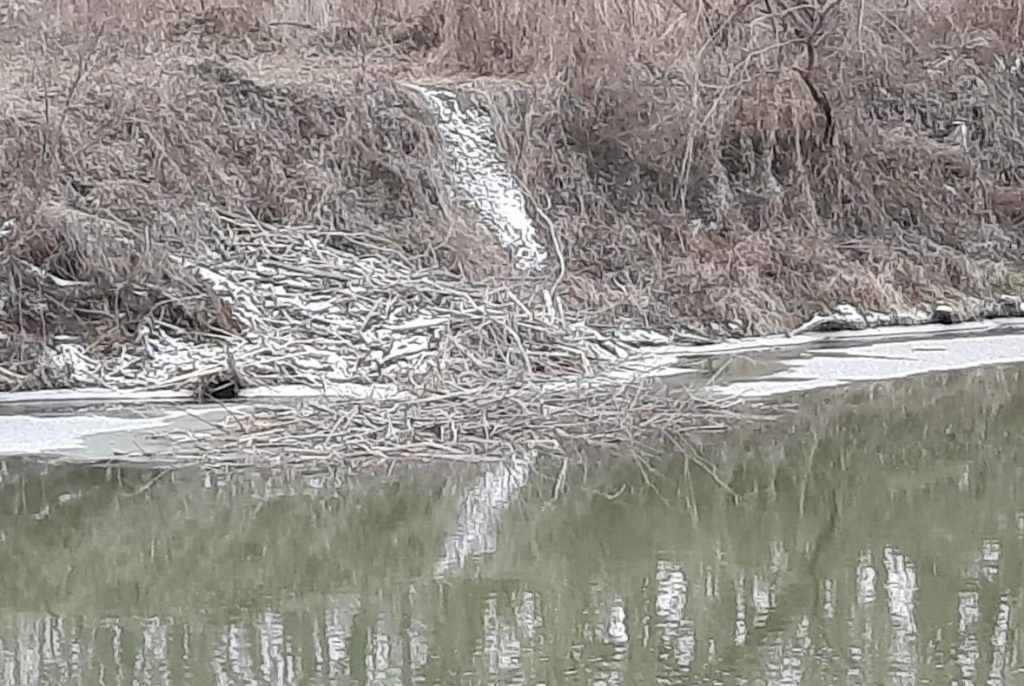
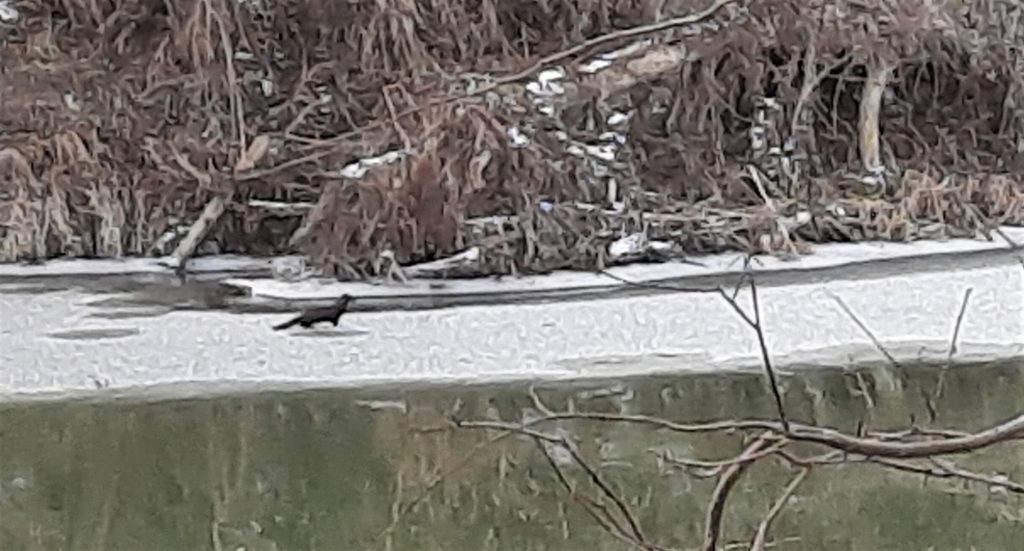
I once saw a chipmunk swimming. There was a mink back on shore. Probably not for long…